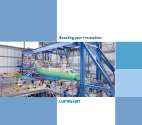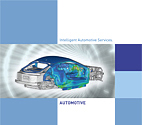- Services
-
Test services and analysis
- Acoustics
- Ballistic investigations, pyro-shock testing
- Determining mass characteristics
- Electromagnetic compatibility
- Testing and fatigue strength
- Services for the construction and agricultural machine industry
- Fatigue strength testing laboratory
- Flight tests
- Functional tests
- High temperature tests
- Climatic Environmental Simulation
- Magnetic field measurement / magnetic field simulation
- Modal test surveys (EMA, OMA)
- Product qualification
- Qualification of Electrical Connectors
- Advanced Composites and Plastic Material
- Qualification & Certification Medical Technology
- Failure Analysis
- Shock Simulations for Naval Platforms
- Structural tests
- Thermal vacuum tests (TV,TB,TD)
- Survivability, vulnerability & effect on target
- Vibration and shock
- Virtual Testing
- Space Simulation
-
Qualification of Electrical Connectors
Qualification of Electrical Connectors
Causes of damage • Optimisation • Qualification
Electrical contact systems play a decisive role in the reliability of technical systems. Mechanical loads from external forces and vibrations under corrosive environmental conditions place high demands on complex connectors. Sliding movements and electrochemical processes can influence the wear behaviour of surfaces in the contact system and thus affect their electric conductivity.
In order to guarantee functionality during the required service life, these effects must be understood and taken into account in the design and verification phase.
The installation of a verification chain of simulations and tests requires knowledge of the relevant damage mechanisms and the corresponding the corresponding external loads and internal stresses and strains.
This knowledge provides the background to evaluate and improve the system‘s reliability. IABG follows an interdisciplinary approach and harnesses the necessary simulation, testing and analysis methods to evaluate and optimise the performance of a system design.
VDI 3822-compliant damage analysis
- Determination of the primary damage mechanism (e.g. wear or fretting corrosion)
- Deduction of possible damage causes
- Damage reconstruction via 2D in-situ x-ray analysis
Modelling and comparison of models
- Generation of CAD data from CT scans of real components
- Construction of an FE model including cable routeing and contact surfaces
- Inclusion of material-specific parameters
- Experimental verification of vibration behaviour
- Validation of deformations and sliding movements with real-time radiography
- Experimental determination of parameters and model adjusting
Load determination through simulation and testing
- Load determination by means of vehicle and test bench measurements
- Simulation of stress and strain on cables, components and contacts
- Load data analysis and derivation of damageequivalent test loads (FatiResponse)
- Simulation of external and internal deformations, contact forces and sliding movements
Load capacity determination
- Vibration tests under various climate and environmental conditions
- Abrasion tests on contact systems
- Continuous or intermittent measurement of frictional wear and change in resistance
- Statistical test planning and evaluation
Verification and optimisation of the system‘s reliability
- Comparison of loads and load capacity parameters
- Computational estimation and experimental verification of function and durability
- Computational and experimental parameter studies
- Optimisation of component design, cable routeing and system integration
- DIN EN ISO/IEC 27001:2017
- VDA ISA TISAX zertifiziert für die Labels „Informationen mit sehr hohem Schutzbedarf“, „Prototypenschutz“ und „Datenschutz“ für die Standorte Ottobrunn und Lichtenau
- ISO 45001 (Locations Ottobrunn, Lichtenau)
- ISO 14001
- DIN EN ISO/IEC 17025 (Location Lichtenau)
- Verzeichnis der Prüfverfahren – Prüflaboratorium DIN EN ISO/IEC 17025 (Standort Lichtenau)
- BSI TR-03140 (TR-SatDS1G) Conformity assessment according to the sateLlite data security act
- ISO 9001
- DIN EN ISO/IEC 17025 for Fatigue Strength Laboratory
- DIN EN ISO/IEC 17025 für das Betriebsfestigkeitslabor - Verzeichnis der Prüfverfahren
- EN 9100
- Accreditation Calibration Lab for Mechanical Units according to DIN EN ISO/IEC 17025
- Accreditation of Testing Lab for Qualification Tests (PLQ) according to DIN EN ISO/IEC 17025
- Certification of Space Test Centre according to ECSS-Q-20-ST-07C
- BSI-certified IT security provider
- AEO (Authorised Economic Operator)


